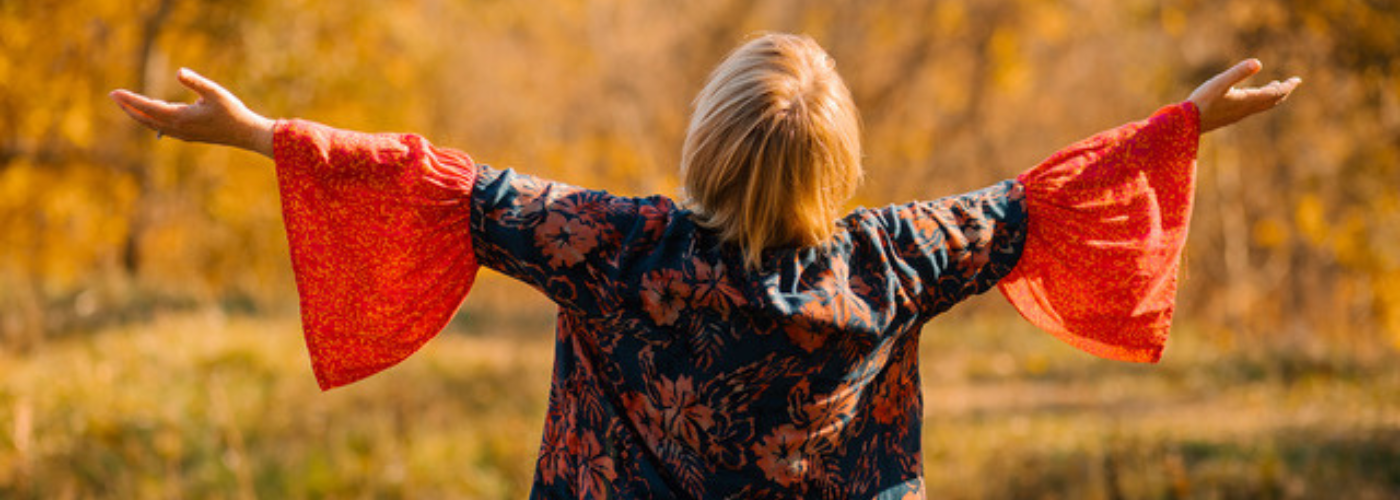
Expert Tips on “Shinrin-Yoku” or Forest Bathing:
An Evidence-based Practice Using Nature to Strengthen Personal Well-being
By Pam Lowe Cho
Senior Executive Coach & Certified Forest Bathing Guide
Trek Executive Coaching
During the pandemic, I proposed to one of my executive coaching clients the idea of joining me for a walk in a park instead of using Zoom for our next coaching session.
Much to my delight she immediately said yes, and the profound coaching conversation we had during that session led to the development of one of my most effective coaching modalities in my coaching practice: forest bathing.

It all started with a group walk I took at the Cincinnati Nature Center in 2019 led by my friend Ellen Foley, an ANFT-certified Forest Bathing Guide. I loved the slow, 2-hour guided walk that helped me quiet my mind by reawakening my five senses as we followed a sequence of invitations and took pauses along the walk. The experience left me with a profound sense of energy, clarity, and hopefulness. Intrigued by the impact, I went back the following month for another walk with Ellen. It had the same transformative effect, solidifying my commitment to this practice.
After these two walks, I started researching “Shinrin-Yoku” or Forest Bathing – an evidence-based practice for psychological and physiological well-being that’s gaining traction in the U.S. and worldwide. As highlighted by a 2016 Washington Post headline, “Forest Bathing-Where Yoga Was 30 Years Ago” this practice has been generating media attention for several years.
Esteemed universities like Stanford University and well-known scientists have conducted research studies demonstrating reductions in blood pressure, heart rate and cortisol levels with forest bathing. Medical practitioners are writing prescriptions for time outdoors for patients with conditions like anxiety and depression, before prescribing medication under programs like ParkRX.

Encouraged by this scientific evidence, I pursued my ANFT-certification in forest bathing and nature therapy in 2022, then traveled to Japan in 2023 to study with forest bathing guides and medical practitioners there. The Japanese practice of “Shinrin-Yoku” or forest bathing, is deeply rooted in the idea of healing in natural elements.
Typically, my individual outdoor coaching sessions last 60 to 90-min. and take place in a park-like setting with minimal noise and easy trails, usually starting early in the morning. The walk is done at a very slow pace. Sometimes we’ll sit on a bench and talk, and other times clients like to find a place to be alone, to be quiet, to think and reflect. While some clients like to have specific goals or topics for their walks, others enjoy talking about topics as they come up.
Over the past two years, I’ve had the privilege of taking physicians on brief walks at 7:00am before they start their surgeries, sat at a picnic table with a business owner making a major decision, aided COVID nurses in restoring their well-being, and helped corporate team members see each other in a new light.
Not all of my clients are interested in, or able to do outdoor walks and I certainly respect that. In these instances, I provide suggestions on other ways to incorporate nature-based activities into their lives:
- Start your day with 5-10 minutes sitting or walking outside. During the pandemic, I developed a routine of enjoying a cup of coffee and sitting on my deck first thing in the morning, a practice I continue today. A friend of mine stands barefoot in the grass in her backyard for a minute or two to give her energy and focus.
- Introduce house plants into your home and workspace. Every time you tend to your plant, your brain will get a hit of the “feel-good” hormone in the brain.
- Display nature-inspired paintings and photographs indoors. Hospitals are adding these to patient rooms and waiting rooms to help relieve stress and promote healing.
- Look for re-occurring patterns in nature called “fractals” to quiet your mind and give your eyes a rest. A fractal can be found in the pattern on the back of a leaf, in a pinecone, the petal in a flower, or the top of an acorn. When we look at fractals, it gives our eyes and brain a mini vacation. Personally, I keep some of these items on my desk in my home office.
The practice of Forest Bathing started in Japan in the 1980s when health care costs started to soar as the culture shifted from doing outdoor work in the countryside, to sitting behind computers in high rises in the city. In response, the country opened its massive park system to workers and encouraged them to spend time in nature before, during, or after work.
As these workers spent more time outdoors, Japan witnessed improvements in the health and well-being of their population, a phenomenon extensively studied worldwide. One of the main differences I saw in how forest bathing is used in Japan vs. in the US is that Japan uses its parks to educate children on the benefits of being outdoors. It’s not unusual to see a Medical Education Center next to the Visitors Center where classes and outdoors tours are given to community school children.
Are you ready to jump in and do your own self-guided, outdoor forest bathing experience? Great! Here are some tips to help you enjoy your time in nature:
- Find a quiet, outdoor space you find enjoyable and easy to navigate whether it’s a park or your own backyard.
- Minimize distractions by keeping your phone out of reach and out of sight
- Before you start walking or when you sit down, close your eyes and be still for a minute or two. Take some deep breaths
Drawing from my 15 years experience as an executive coach and my background in corporate communications, including a tenure at The White House, I am intimately familiar with the toll of stress and burnout. Reflecting on my own journey, I now recognize the value in integrating nature and outdoor experiences into our lives before we compromise our well-being.
Now armed with this knowledge of the therapeutic power of nature, I encourage you to take advantage of opportunities to connect with the outdoors – whether its sitting on your patio or front step for a few minutes, walking your dog, exploring a new park, or indulging in a vacation in the mountains or by the ocean.
Give yourself permission to thrive, prioritize self-care, and enjoy time outdoors. See you on the trails!
To learn more about Pam and Trek Executive Coaching, Visit https://trekcoaching.com/

Leave a comment